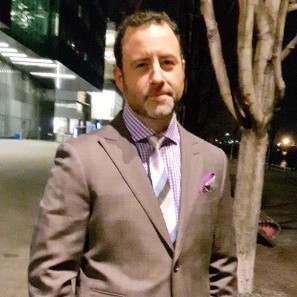Next week, Gabe Charles will move into the top job in Oakville’s planning department. The veteran planner knows he's in for a busy year.

With updates to both the town and regional Official Plans underway, a five-month-long hearing scheduled to finally resolve the future of Glen Abbey, and a slew of development applications around the town, Charles says the department will be working hard in 2021.
“There’s definitely a lot going on this year,” he says.
Charles has worked as a town planner since 2006, save for a 17-month stint he spent in Milton about five years ago. He also serves as a board member with the Council for Canadian Urbanism.
He will take on the position of interim director of Planning Services on Feb. 1, replacing current director Mark Simeoni, who will head down the QEW to start a new job with the city of Burlington.
In advance of his move into the department’s top position, we asked for his thoughts on some of the big issues facing Oakville.
Planning for growth
“We have a lot of challenging development applications,” says Charles. “They’re getting more and more complex as the years go on.”
In a sure sign that people love Oakville just the way it is, growth is often contentious. From new neighbourhoods in North Oakville to condo towers along Trafalgar Road, to infill developments in established areas, new development typically receives skeptical scrutiny from the public.
An engaged public is one of the town’s assets, says Charles. “The only real way you can build good communities is to have that public participation.”
The input of long-established and capable resident groups can result in important improvements to proposed developments, but planners also must contend with a common public perspective that the town should simply refuse unwanted growth.
“It’s not just a matter of responding to applications, it’s also about education,” says Charles. “It’s a requirement from the province and the region that we need to grow, so we need to ensure we are growing in the right way.”
That means showing sensitivity to established neighbourhoods and directing growth toward identified town centres and corridors, he says.
Urban mobility strategy
Development of an urban mobility strategy is underway, with the aim of ensuring residents have effective ways to move around town beyond just using private vehicles. The focus will be on ensuring walking, cycling and public transit options are safe and efficient.
“When it comes to transportation, it’s all about choice,” says Charles.
Looking at the on-foot experience serves everyone, he adds. “Every person at some point in their journey is a pedestrian.”
As for cycling, the strategy will consider biking for both recreation and transportation, and identify the commitment necessary to maintaining routes and clearing snow.

When skeptics question the feasibility of cycling as transportation in a winter climate, Charles says he points to the success of Copenhagen and Amsterdam.
“We do not have the capacity to continue to expand our roads,” he argues. “If you prioritize cars, you’re going to get more cars.”
North Oakville parking study
The future may be less dependent on personal automobiles, but today there’s plenty of them circling too few parking spaces in North Oakville.
A study to address that issue will soon get underway, says Charles. With the RFP process completed, the town is close to hiring consultants to undertake the study.
But despite resident complaints and council concerns over parking, Charles defends the North Oakville design.
“Quite simply, what we have said is that the car has to fit into the different transportation choices you have in North Oakville and it is not the priority.”
“It is something that we are going to have probably some really tough conversations with council about,” he adds.
“There is limited capacity, and we want to make sure we are using the capacity from a road perspective for all the right reasons and that we’re moving the most amount of people the most efficiently and in a way the municipality can actually afford.”
Glen Abbey
With the future of Glen Abbey Golf Club on the line, several of the town’s planning staff will spend most of this year preparing for and participating in the scheduled hearing before the Local Planning Appeal Tribunal (LPAT).
The tribunal, which will ultimately decide whether the town can block redevelopment of the golf course on the grounds that it is a historic cultural feature, will start hearing the case on Aug. 3.
The hearing is scheduled to take place at Town Hall with both in-person and videoconferencing sessions as needed.